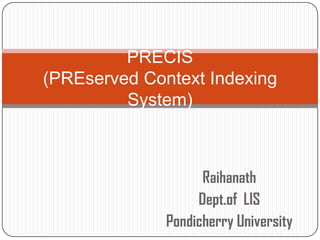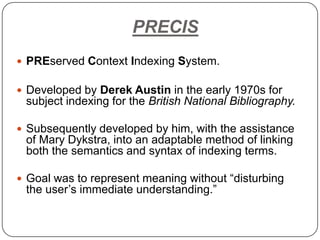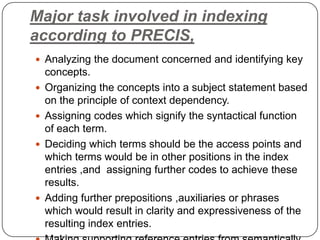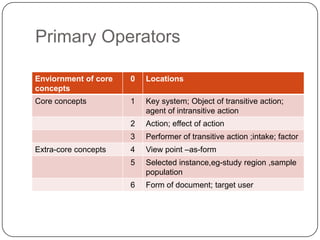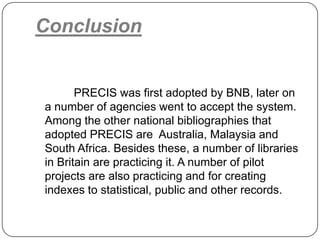The document describes PRECIS (PREserved Context Indexing System), an indexing system developed in the 1970s. It aims to represent meaning in index entries without disturbing user understanding. PRECIS uses role operators and strings of terms to preserve context across permuted index entries. It was used for indexing the British National Bibliography but was replaced by COMPASS in 1990. PRECIS requires analyzing documents, organizing concepts, and assigning role codes to terms to generate automated two-line index entries preserving semantics and syntax.
